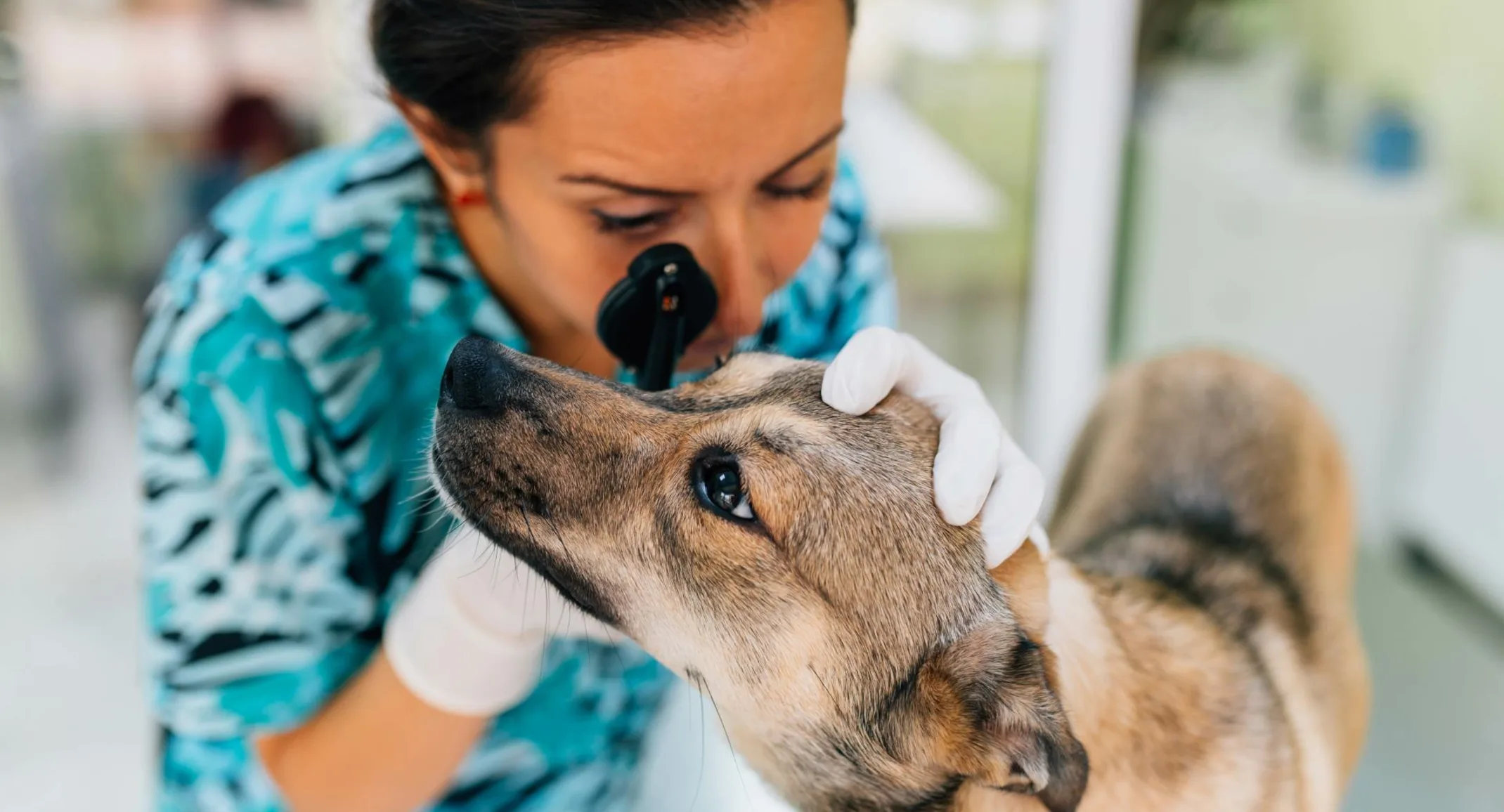Spotlight on Pet Eye Health: Glaucoma and Cataracts in Dogs and Cats
Diseases and Viruses

If you’ve noticed changes in your pet’s eyes or vision, you might wonder what could be going on. Stumbling on the stairs, difficulty finding treats, or newly hazy eyes could mean that your pet has glaucoma or cataracts. Aging, disease, and genetics can cause changes in your pet’s eye health that could impact their long-term vision and comfort.
The Metropolitan Veterinary Hospital ophthalmology team explains what glaucoma and cataracts are, how to spot the warning signs, and what to do if you suspect a problem with your pet’s eyes.
Identifying glaucoma in pets
Glaucoma is a painful, vision-threatening eye condition that develops when pressure inside the eye (i.e., intraocular pressure [IOP]) gets too high. The excess pressure damages the optic nerve and causes pain and discomfort. Glaucoma in pets often leads to blindness, but early detection and intervention can help preserve your pet’s eye health and vision for as long as possible.
Signs of glaucoma
Pets can’t tell us when their eyes hurt or their vision changes. Glaucoma is most common in dogs, but it can also develop in cats. Although it typically starts in only one eye, it can also affect the other eye, depending on the cause. Glaucoma may come on gradually or develop quickly, resulting in acute, severe pain.
Signs of glaucoma to watch for include:
Cloudy or bluish appearance to the eye’s surface
Redness in the white part of the eye
One eye that looks larger than the other
Rubbing or pawing at the face or eyes
Dilated pupil
Bumping objects on one side or becoming easily startled
Acting more withdrawn or irritable
Identifying cataracts in pets
Cataracts are a cloudy, opaque change in the eye’s lens. The lens, which is normally clear, sits behind the pupil, where it helps focus light onto the retina. When a cataract forms, it blocks the light, making it harder for your pet to see. Cataracts can affect one or both eyes and may progress slowly with age or develop very quickly—as often happens in dogs with diabetes.
Signs of cataracts
Cataracts in pets may start small and become larger or denser over time. Like glaucoma, they are common in dogs but can occasionally occur in cats. They often form in both eyes, but one may be more advanced than the other. Older dogs are most likely to develop cataracts, but some forms can develop during puppyhood.
Signs of cataracts to watch for include:
A cloudy, gray, or bluish tint to the pupil (i.e., the black part of the eye in the middle of the iris)
Bumping into furniture or walls
Trouble navigating unfamiliar places
Reluctance to jump or climb stairs
Worse vision in low light
Mild redness in the whites of the eyes
Cataracts are not painful, but they can cause inflammation and impact your pet’s overall eye health. Left untreated, the inflammation can lead to secondary glaucoma and discomfort.
What causes glaucoma and cataracts?
Glaucoma is often genetic, but injury, inflammation, infection, cancer, or complications from other eye conditions can also play a role. Some dog breeds, such as Cocker spaniels, Basset hounds, Shiba Inus, and Siberian huskies, have a higher risk of developing glaucoma. When cats get glaucoma, it’s usually secondary to a systemic infection or other eye condition.
Cataracts have a genetic component, but they are also linked to aging. Diabetic dogs nearly always develop cataracts because of the way fluids and sugars move through the eye. Injuries, retinal conditions, and long-term inflammation may also cause cataracts.
Treatment options for glaucoma and cataracts
Treatment for eye conditions depends on your pet’s overall eye health, disease severity, and vision status. When vision is lost to glaucoma, it cannot be regained. Vision loss due to cataracts may be restored with surgery.
Glaucoma treatment
Glaucoma is a chronic disease requiring long-term management, usually with eye drops that lower pressure and improve fluid drainage from the eye. If the eye drops stop working, laser surgery can destroy the fluid-producing cells in the eye without harming vision.
Eye removal surgery may be recommended to relieve pain from a blind, glaucomatous eye. Pets who are blind in one or both eyes typically adapt well and still enjoy a good quality of life.
Cataract treatment
Once cataracts form, surgery is the only way to remove them. The procedure, called phacoemulsification, involves removing the lens and replacing it with an artificial lens. Not all pets are good candidates for surgery, and in most cases, it is an elective surgery. Only a veterinary ophthalmologist can perform this advanced procedure.
Before surgery, the veterinary ophthalmologist will perform testing to ensure the retina is functioning properly. If the retina is damaged or detached, surgery will not restore vision. Anti-inflammatory eyedrops and long-term monitoring are recommended when surgery is not pursued.
Specialist care for glaucoma and cataracts
Your family vet can often diagnose cataracts or glaucoma and manage minor pet eye health changes. However, a board-certified veterinary ophthalmologist has the specialized equipment and advanced training required to best treat and manage these chronic conditions.
If you suspect your pet has an eye problem, don’t wait to seek care. Contact us to schedule a visit with the Metropolitan Veterinary Hospital ophthalmology team at our Akron or Cleveland East locations or visit our website to learn more about our wide range of specialty pet care services.
